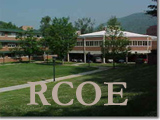|
|
|
|
Cover Page
Artifact # 8 |
Modern
Fashion & Invention
This is an interdisciplinary activity, which can be used with Grades 3-6. This project is a lesson plan in which students will choose an everyday item and create a new use for the item. Once the students have invented their new product they will write a newspaper article about it and create a web site. It requires the use of various computers with internet access, Netscape Navigator, and PhotoShop software. This project also requires the use of digital cameras. This part of the assignment can be eliminated or improvised. For example, if there is access to a scanner, pictures can be taken by the students and then scanned into the page. Context I created this set of web pages during the fall of 2002 as part of the Integrating Media and Technology into Teaching course at Appalachian State University, under the direction of Jeff Goodman. I created the web pages using Netscape Composer. I took the photos with a digital camera and cropped and sized them using Adobe Photoshop. Impact This website was created including teacher and student instruction pages as well as an example page. The activity is mainly for grades third through sixth. I plan to use this in my classroom to get children to use technology by learning how to create a web page and use a digital camera to take pictures. By completing this project the students will become familiar with the different programs used to create the web page. The students will also use their language arts skills by writing a newspaper article about the item they invented. This project will motivate students because it is fun and because their final work will be displayed on the world wide web. This project allows students to get experience with a wide range of technology, including the internet, while providing a safe learning environment. This project can be accessed through the internet, which allows any teacher looking for an activity that integrates technology in the classroom will have access to it. This activity meets a wide range of goals listed in the North Carolina standard coarse of study. For example, the following are goals from the third grade curriculum which are met by this activity: Language Arts competencies:
Alignment The Modern Fashion and Invention
Activity fulfills goals II D, II E, IV C, and VI E of the National Educational
Technology Standards for Teachers, as well as INTASC Principles 4, and
8. I have provided suggestions for the management of technology resources
while doing this activity on the teacher's page of this activity (II D).
There are also suggestions on the teacher page for adaptations to be made
for students with special needs (VI E). Through the Modern Fashion and
Invention Activity, students will be provided opportunities to use critical
thinking skills as they create new uses for odd gadgets. By prompting students
to apply reasoning skills in determining purposes for odd gadgets, I will
be effectively managing student learning in a technology-enhanced environment
(II E). In addition, I included a grading rubric on my Modern Fashion and
Invention web pages, which highlights how students will be evaluated on
their uses of technology (IV C). The Modern Fashion and Invention Activity
incorporates the use of multiple instructional strategies as students use
thinking and reasoning skills to create uses for odd gadgets, take digital
images of gadgets, produce descriptive newspaper articles, and design web
pages to display articles and photographs (INTASC 4). Finally, formal and
informal assessments are employed to evaluate student learning. For example,
a rubric is used to guide teacher grading, while also communicating to
students items that should be included in their work. As teachers offer
feedback on Modern Fashion and Invention activities via email, students
are aware of strengths and weaknesses and can make changes and alterations
before submitting final projects (INTASC 8).
|
